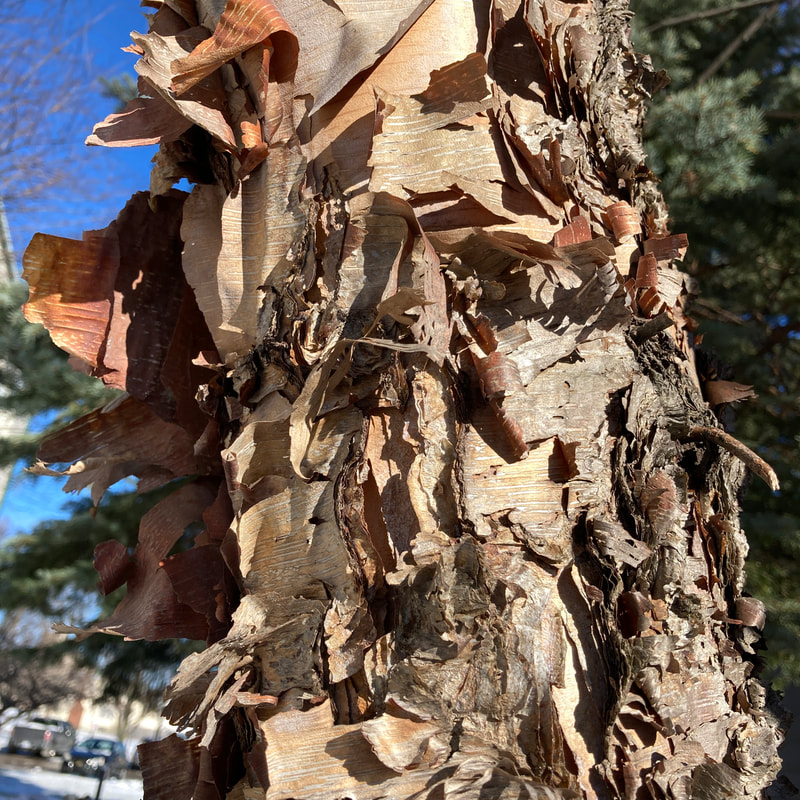|
Photo and article by Donna Iverson In winter, instead of scanning the ground for interesting leaves, veggies and flowers, my gardener’s eye seeks out tree bark. It brightens my day being able to recognize the trees in my neighborhood by their distinctive bark. For example, the smooth grey bark of the beech, the spiky branches of the hawthorn, the deep vertical ridges of the oak, and the peeling scales of the white birch. Recently, I encountered an unfamiliar tree with multicolored overlapping scales. It looked similar to white paper birch but it wasn’t white. A tree identification book from the library helped nail it. It was a river birch (Betula nigra), a native tree that prefers damp ground and cool shade and grows along the water’s edge ..hence its name. The river birch has multiple trunks and grows to 60 feet high with a 60 foot spread. It is a fast growing and long lived tree, reaching 75 years according to some gardening sources. It’s roots are not invasive but it should be planted at least 20 feet from any building as its roots will seek water. In the spring, it produces male and female catkins and thousands of seeds that provide food for birds. Wildlife flock to its branches, including nuthatches, chickadees, titmice, sparrows, cardinals, finches, blue jays and towhees. Squirrels love to run up and down it’s flexible branches jumping from one to the next in what looks like a wild game of chase. Compared to the bark of the white birch, river birch bark is pinkish brown not white, and peels off in much more rugged large chunks. The wood itself is knotty and weak but can be used to make inexpensive toys and woodenware like plates. The wood can also be burned in fire places and fire pits. There are at least a dozen varieties of birch including yellow birch, sweet birch, water birch, European birch, grey birch and Virginia birch. Medicinally, the river birch which is also called black birch, has been used for centuries as cures for tuberculosis, colds, sores and dysentery. All parts of the tree are used including leaves, bark and roots. But birch allergy does exist, so be cautious and eliminate this possibility before foraging.
0 Comments
Your comment will be posted after it is approved.
Leave a Reply. |
Archives
April 2024
Categories |

 RSS Feed
RSS Feed